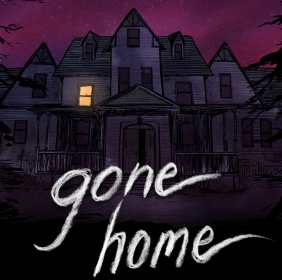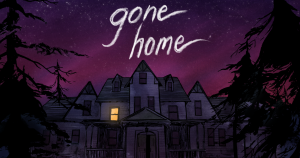I found it absolutely necessary to play this game in broad daylight in order to avoid the mini heart attacks that would have occurred if I had played this game alone at night. As you can probably tell, I am not a fan of anything that falls into the horror genre. Personally, I did not enjoy eerie music and melancholic environment even though some people may think otherwise. I can see how the creators of the game utilize the background noise, such as the lightning and faint footsteps, to build a sense of anticipation and suspense. I desperately sought a light switch or lamp the second I entered a lightly dimmed room.
In terms of the structure of the game, I enjoyed being able to pick engage with the inanimate objects in the room. Even though most of the things we were able to pick up were completely irrelevant to the game, I still found pleasure in scoping the area and making some sense of the documents, stationary materials, cups, condoms, books and other random items. I felt as if each item played its own part in helping the audience piece together all of the information. We can assume the intimacy between Sam and Lonnie through their scribbled messages and drawings. From Sam’s first meeting with Lonnie to her first kiss with Lonnie, the audience was practically living her journey through her diary entries.Unlike a book, we found pieces of the story and we had to make our own interpretation of what is happening through the accumulation of clues through searching every inch of the house. It excites the audience and stimulates a sense of curiosity that is completely different from a book or movie feeding viewers information. The locker combinations for Sam’s locker and the filing cabinet as well as the key to open the darkroom were clues that the audience had to patiently find in the house. We weren’t watching Katie peace together the information; we were the ones who had to take a course of action.I feel that this gives the audience a more engaging first hand experience rather than a one-sided narrative text.
It was such a unique experience getting to know the characters through a game simulation. Even as minor characters, the mother and father had an interesting storyline as well. We can piece together the story behind the mother’s affair with the ranger and the father’s writing career in shambles. We can also assume that Katie is a very intelligent student whereas Sam seems to be quite the opposite. Through the narratives and little notes in the game, we can tell that she is a rebellious, strong-minded and resilient young woman. However, her diary entries also revealed a more vulnerable and timid side of her. In the late 1900s, someone coming out as homosexual would be unconventional, sometimes even shameful. Her parents were even in denial when she came out to them. Sam even doubted herself at first, but she learned to accept and love who she has become because her love for Lonnie proved stronger than traditional standards.
All in all, this game was definitely the highlight of my week. The excitement and curiosity that grew as I discovered additional information engrossed me until the very end. Homophobia and molestation were definitely touchy subjects at that time period, and it made the game all the more interesting. I enjoyed reading the short messages between Lonnie and Sam as well as hearing Sam’s voice in her journal entries because it added intimacy between the audience and the characters. The sound of her faint and sorrowful voice in her entries give the audience a sense of sympathy towards her, but in a different way that a book or a movie would do so. When Sam said that her heart was beating faster and faster, I felt as if my heart wanted to do the same. At the end of the game, I felt more of a stronger connection to both Katie and Sam.






